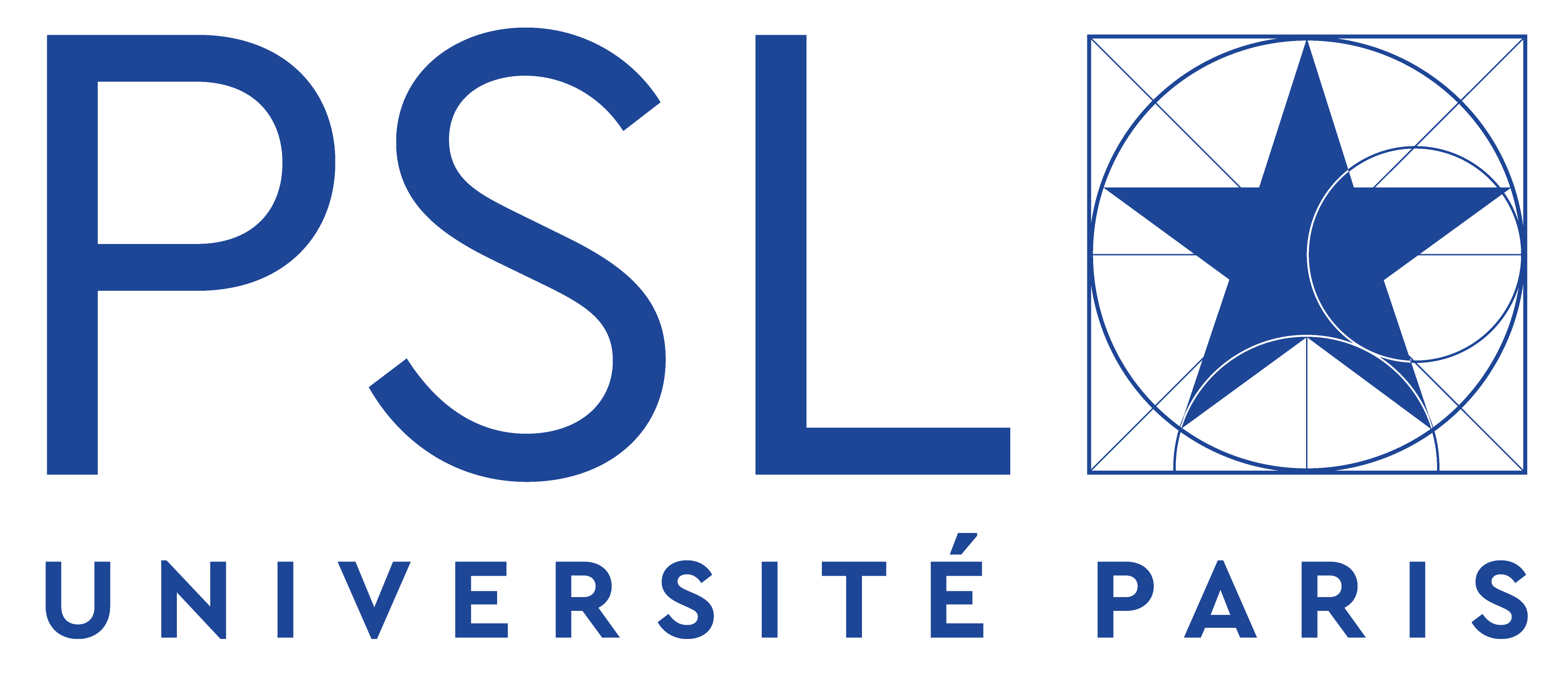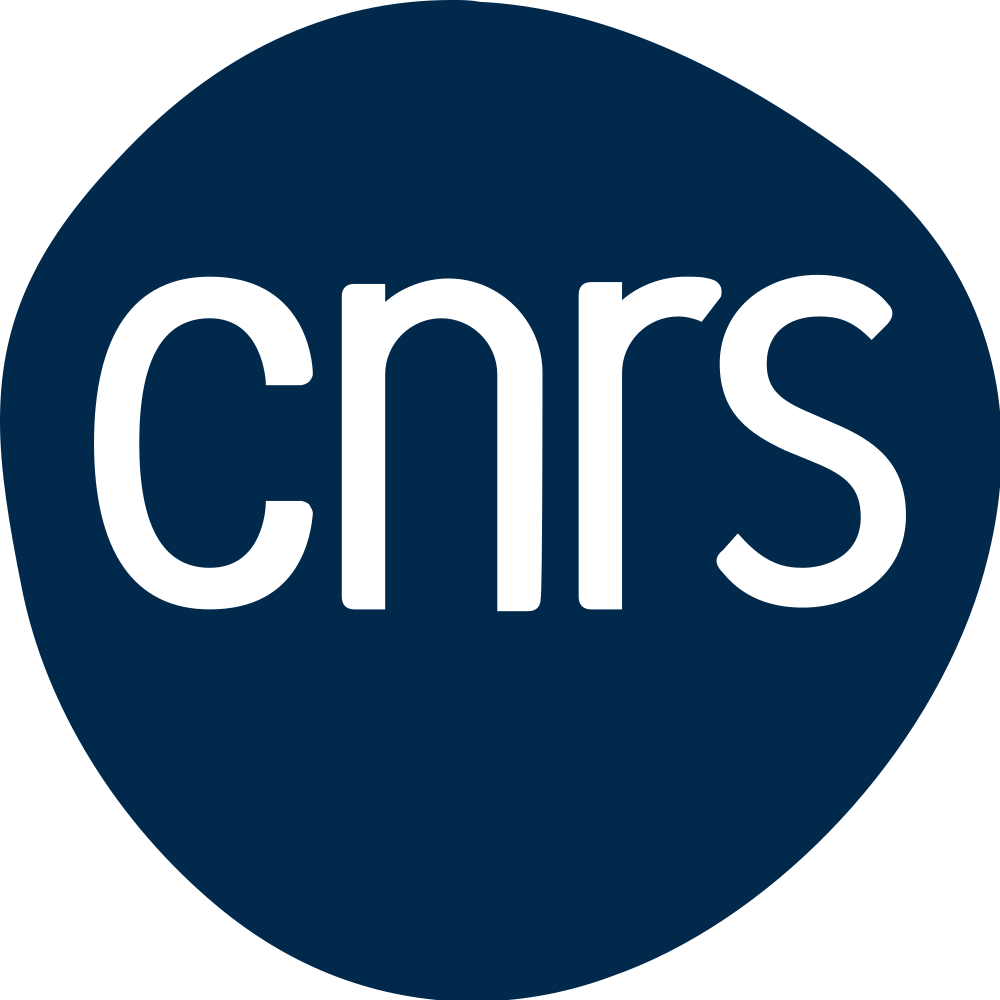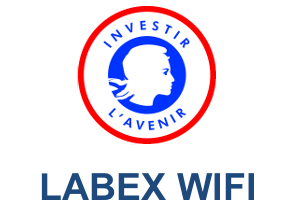Analog phase-sensitive time-reversal of optically carried radiofrequency signals
Llauze, T., and A. Louchet-Chauvet
Optics Letters 50, no. 16, 4874-4877 (2025)
Résumé: Achieving low-latency time-reversal of broadband radiofrequency signals is crucial for reliable communications in dynamic, uncontrolled environments. However, existing approaches are either digitally assisted—making broadband extension challenging—or limited to amplitude modulation. In this work, we report the very first, to our knowledge, experimental realization of a fully analog, phase-preserving time-reversal architecture for optically carried radiofrequency signals. The method exploits the exceptional coherence properties of rare-earth ion-doped materials and leverages the well-established photon echo mechanism, widely used in quantum technologies. While our demonstration is conducted with a modest bandwidth, we identify the fundamental cause of this limitation and propose solutions for future scalability.
|


|
Versatile, fast, and accurate frequency excursions with a semiconductor laser
Llauze, T., F. Montjovet-Basset, and A. Louchet-Chauvet
Applied Optics 63, no. 19, 5192-5202 (2024)

Résumé: Achieving accurate arbitrary frequency excursions with a laser can be quite a technical challenge, especially when steep slopes (GHz/μs) are required, due to both deterministic and stochastic frequency fluctuations. In this work we present a multistage correction combining four techniques: pre-distorsion of the laser modulation, iterative correction, opto-electronic feedback loop, and feed-forward correction. This combination allows us not only to compensate for the non-instantaneous response of the laser to an input modulation but also to correct in real time the stochastic frequency fluctuations.We implement this multistage architecture on a commercial DBR laser and verify its efficiency, first, with monochromatic operation, and second, with highly demanding frequency excursions. We demonstrate that our multistage correction not only enables a strong reduction of the laser linewidth but also allows steep frequency excursions with a relativeRMSfrequency errorwell below1%and a laser spectral purity consistently better than 100 kHz, even in the midst of gigahertz-scale frequency excursions.
|

|
Piezo-orbital backaction force in a rare-earth-doped crystal
Louchet-Chauvet, A., P. Verlot, J. P. Poizat, and T. Chanelière
Physical Review Applied 20, no. 5 (2023)
Résumé: We investigate a system composed of an ensemble of room-temperature rare-earth ions embedded in a bulk crystal, intrinsically coupled to internal strain via their sensitivity to the surrounding crystal field. We evidence the generation of a mechanical response under resonant atomic excitation. We find this motion to be the sum of two fundamental, resonant optomechanical backaction processes: a conservative, piezo-orbital mechanism, resulting from the modification of the crystal field associated with the promotion of the ions to their excited state, and a dissipative, nonradiative photothermal process related to the phonons generated throughout the atomic population relaxation. Our work expands the horizons of research in hybrid optomechanics, and unveils unexplored interactions that may be key for understanding the dephasing dynamics of ultracoherent rare-earth ions.
|

|
Strain-mediated ion-ion interaction in rare-earth-doped solids
Louchet-Chauvet, A., and T. Chanelière
Journal of Physics Condensed Matter 35, no. 30, 305501 (2023)
Résumé: It was recently shown that the optical excitation of rare-earth ions produces a local change of the host matrix shape, attributed to a change of the rare-earth ion's electronic orbital geometry. In this work we investigate the consequences of this piezo-orbital backaction and show from a macroscopic model how it yields a disregarded ion-ion interaction mediated by mechanical strain. This interaction scales as 1/r3, similarly to the other archetypal ion-ion interactions, namely electric and magnetic dipole-dipole interactions. We quantitatively assess and compare the magnitude of these three interactions from the angle of the instantaneous spectral diffusion mechanism, and re-examine the scientific literature in a range of rare-earth doped systems in the light of this generally underestimated contribution.
|

|
In vivo ultrasound modulated optical tomography with a persistent spectral hole burning filter
Thai, Q. M., G. Kalot, C. Venet, J. Seguin, M. Bocoum, N. Mignet, F. Ramaz, and A. Louchet-Chauvet
Biomedical Optics Express 13, no. 12, 6484-6496 (2022)
Résumé: We present in vivo ultrasound modulated optical tomography (UOT) results on mice, using the persistent spectral hole burning (PSHB) effect in a Tm3+:YAG crystal. Indocyanine green (ICG) solution was injected as an optical absorber and was clearly identified on the PSHB-UOT images, both in the muscle (following an intramuscular injection) and in the liver (following an intravenous injection). This demonstration also validates an experimental setup with an improved level of performance combined with an increased technological maturity compared to previous demonstrations.
|


|
High rejection and frequency agile optical filtering of RF signals using a rare earth ion-doped crystal
Ulrich, L., S. Welinski, A. Louchet-Chauvet, J. D. Rosny, D. Dolfi, C. Vaneph, P. Berger, and L. Morvan
Journal of Lightwave Technology 40, no. 20, 6901-6910 (2022)
Résumé: While photonics is broadly considered as a leading solution for analog RF processing, photonic RF filters often show a limited out-of-band rejection. In this work we demonstrate a high rejection and high steepness photonic RF bandpass filter based on spectral hole burning in a rare earth ion-doped crystal. The filter is obtained by programming a frequency-selective absorption grating in the crystal. With an experimental and theoretical study we identify the optimal parameters for this filter. We achieve a remarkable rejection of 60 dB and a rejection of 45 dB at 50 MHz from the edge of the filter, compliant with most demanding applications.
|

|
Limits to the sensitivity of a rare-earth-enabled cryogenic vibration sensor
Louchet-Chauvet, A., and T. Chanelière
AVS Quantum Science 4, no. 2, 024401 (2022)
Résumé: Cryogenics is a pivotal aspect in the development of quantum technologies. Closed-cycle devices have recently emerged as an environmentally friendly and low-maintenance alternative to liquid helium cryostats. Yet the larger level of vibrations in dry cryocoolers forbids their use in most sensitive applications. In a recent work, we have proposed an inertial, broadband, contactless sensor based on the piezospectroscopic effect, i.e., the natural sensitivity of optical lines to strain exhibited by impurities in solids. This sensor builds on the exceptional spectroscopic properties of rare earth ions and operates below 4 K, where spectral hole burning considerably enhances the sensitivity. In this paper, we investigate the fundamental and technical limitations of this vibration sensor by comparing a rigid sample attachment to the cold stage of a pulse-tube cryocooler and a custom-designed exchange gas chamber for acoustic isolation.
|


|
Telecom wavelength optical processor for wideband spectral analysis of radiofrequency signals
Louchet-Chauvet, A., P. Berger, P. Nouchi, D. Dolfi, A. Ferrier, P. Goldner, and L. Morvan
Laser Physics 30, no. 6 (2020)
Résumé: © 2020 Astro Ltd. In this paper we present a spectral analyzer for wideband RF signals with a spectral hole-burning-based architecture operating at telecom wavelength. This device is based on a codoped Er3 +:Sc3 +:Y2SiO5 crystal whose inhomogeneous linewidth allows for wideband operation. With time-resolved holeburning spectroscopy experiments we study the homogeneous linewidth and spectral diffusion in an unusual magnetic field configuration. We finally demonstrate the spectral analysis of RF signals with 28 GHz instantaneous bandwidth and MHz resolution. This work opens the way towards more complex architectures such as direction finding with wideband capacity.
Mots-clés: rare-earth doped crystals; spectral analysis; spectral holeburning
|

|
Tailoring the 3F4 level lifetime in Tm3+: Y3Al5O12 by Eu3+ co-doping for signal processing application
Zhang, Z., A. Louchet-Chauvet, L. Morvan, P. Berger, P. Goldner, and A. Ferrier
Journal of Luminescence 222 (2020)

Résumé: © 2020 Elsevier B.V. Tm3+: Y3Al5O12 (Tm:YAG) crystal is a promising material for high-resolution spectral analysis of broadband radio-frequency (RF) signals, where the absorption spectrum is modified via spectral hole burning. In Tm:YAG, the efficiency of the spectral tailoring is limited by the long-lived metastable level 3F4, acting as a bottleneck for the optical pumping mechanism. We demonstrate that co-doping Tm:YAG with Eu3+ ions can significantly shorten the optical lifetime of 3F4 state, while that of 3H4 is essentially conserved. We show with a model that these modified lifetimes allow faster tailoring of the absorption profile. Because of their low cost and easiness of processing, we use Tm3+ and Eu3+ co-doped Y3Al5O12 ceramics to probe the energy transfer efficiency and find the optimal cation co-doping concentration. Furthermore, we show that Eu3+ co-doping increases the inhomogeneous broadening on the Tm3+ optical transition, hence the spectral analysis bandwidth. Finally, we confirm these results on a single crystal grown by the Czochralski method.
Mots-clés: Crystal growth; Rare earth spectroscopy; RF signal processing; Tm,Eu:YAG crystal
|


|
Structured ultrasound-modulated optical tomography
Bocoum, M., J. L. Gennisson, J. B. Laudereau, A. Louchet-Chauvet, J. M. Tualle, and F. Ramaz
Applied Optics 58, no. 8, 1933-1940 (2019)
Résumé: © 2019 Optical Society of America Ultrasound-modulated optical tomography (UOT) is an imaging technique that couples light and ultrasound in order to perform in-depth imaging of highly scattering media. In previous work, we introduced plane wave UOT, an imaging method analogous to x-ray tomography based on the filtered backprojection for image reconstruction. Angle-limited measurements, however, led to drastic loss of lateral spatial resolution. Here, we present a new structured ultrasonic plane wave UOT method that allows partial recovery of the resolution. For image reconstruction, we present a generalization of the Fourier slice theorem along with a generalized filtered backprojection formalism. The method is successfully tested on simulated and experimental data.
|

|
Deep and persistent spectral holes in thulium-doped yttrium orthosilicate for imaging applications
Venet, C., B. Car, L. Veissier, F. Ramaz, and A. Louchet-Chauvet
Physical Review B 99, no. 11 (2019)
Résumé: © 2019 American Physical Society. With their optical wavelength in the near infrared (790-800 nm) and their unique spectroscopic properties at cryogenic temperatures, thulium-doped crystals are at the center of many architectures linked to classical signal processing and quantum information. In this work, we focus on Tm-doped YSO, a compound that was left aside in the mid-1990s due to its rather short optical coherence lifetime. By means of time-resolved hole-burning spectroscopy, we investigate the anisotropic enhanced nuclear Zeeman effect and demonstrate deep, sub-MHz, persistent spectral hole burning under specific magnetic field orientation, and magnitude. By estimating the experimental parameters corresponding to a real-scale ultrasound optical tomography setup using Tm:YSO as a spectral filter, we validate Tm:YSO as a promising compound for medical imaging in the human body.
|

|
Ultrasound-modulated optical tomography in scattering media: Flux filtering based on persistent spectral hole burning in the optical diagnosis window
Venet, C., M. Bocoum, J. B. Laudereau, T. Chaneliere, F. Ramaz, and A. Louchet-Chauvet
Optics Letters 43, no. 16, 3993-3996 (2018)
Résumé: © 2018 Optical Society of America. Ultrasound-modulated optical tomography (UOT) is a powerful imaging technique to discriminate healthy from unhealthy biological tissues based on their optical signature. Among the numerous detection techniques developed for acousto-optic imaging, only those based on spectral filtering are intrinsically immune to speckle decorrelation. This Letter reports on UOT imaging based on spectral hole burning in Tm:YAG crystal under a moderate magnetic field (200G) with a well-defined orientation. The deep and long-lasting holes translate into a more efficient UOT imaging with a higher contrast and faster imaging frame rate. We demonstrate the potential of this method by imaging calibrated phantom scattering gels.
|

|
High resolution, large dynamic range spectral filtering at 800 nm using Tm:YAG crystals
Louchet-Chauvet, A., R. Lauro, P. Goldner, F. Ramaz, T. Chanelière, and J.-L. Le Gouët
Proceedings of SPIE - The International Society for Optical Engineering 7948 (2011)

Résumé: Thulium-doped crystals are considered for programmable filtering. Such a filter can be acllieved by Spectral Hole Burning (SHB). One optically pumps the active ions into a long-lived shelving state, opening a narrow transparency window in the crystal absorption band. We investigate a new shelving scheme in Tm:YAG where the thulium ions are pumped into a ground state nuclear Zeeman sublevel, instead of their natural 10ms-lifetime metastable state. The shelving time is increased to several seconds, reducing the residual population in the transparency window by orders of magnitude. This should enhance the filter's dynamic range, which is essential in demanding filtering applications like ultrasound optical tomography. © 2011 SPIE.
Mots-clés: High-resolution spectral filtering; Rare-earth ion-doped crystals; Spectral hole-burning; Ultrasound-modulated optical tomography; Active ions; Crystal absorption; Doped crystals; Dynamic range; Filtering applications; High resolution; Meta-stable state; Orders of magnitude; Rare earth ions; Spectral filtering; Spectral hole-burning; Thulium ions; Ultrasound-modulated optical tomography; YAG; YAG crystal; Crystals; Erbium doped fiber amplifiers; Ions; Optical tomography; Quantum computers; Quant
|

|
 notre projet sur le retournement temporel de signaux RF est financé par l’ANR ! Voir le site dédié ici
notre projet sur le retournement temporel de signaux RF est financé par l’ANR ! Voir le site dédié ici









